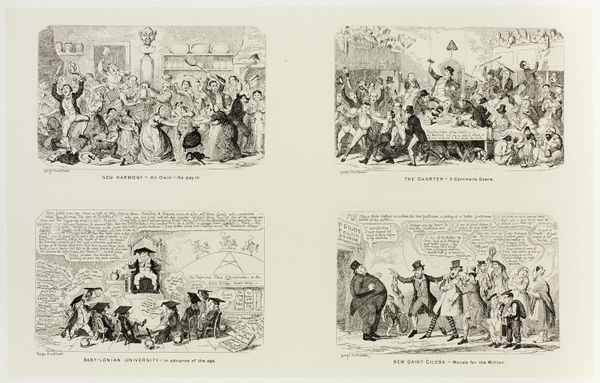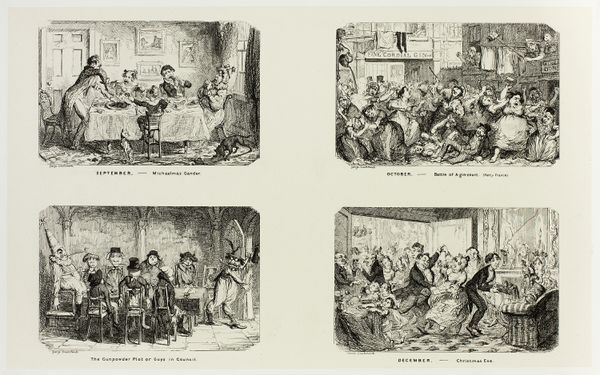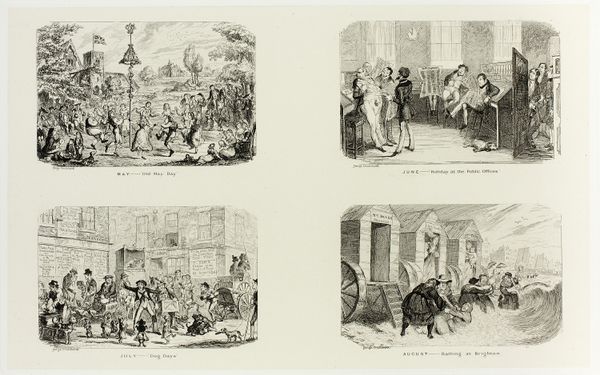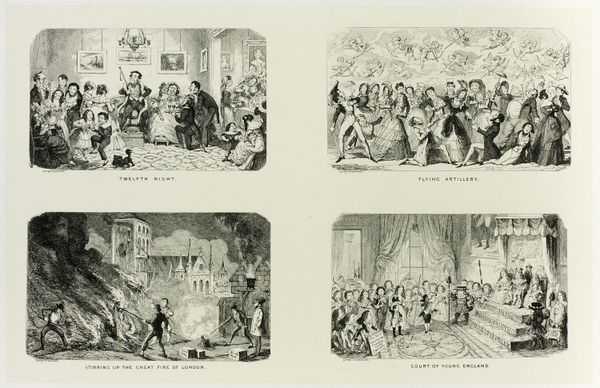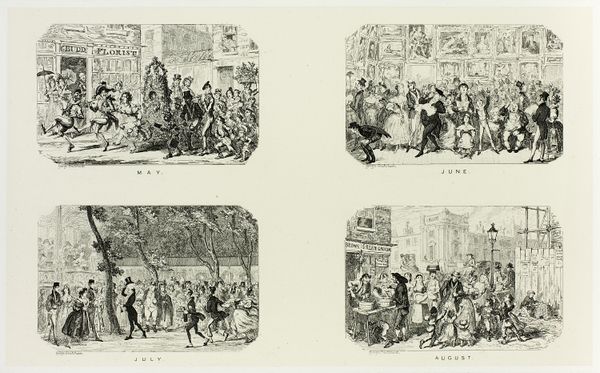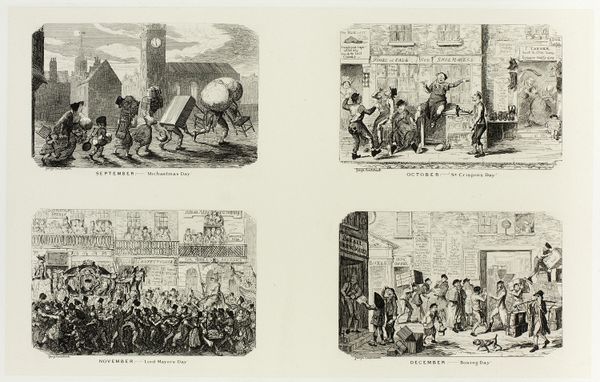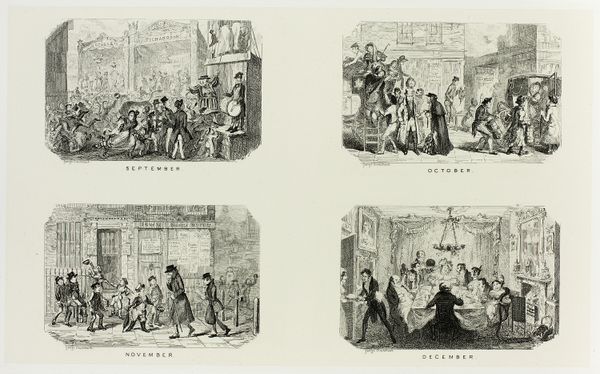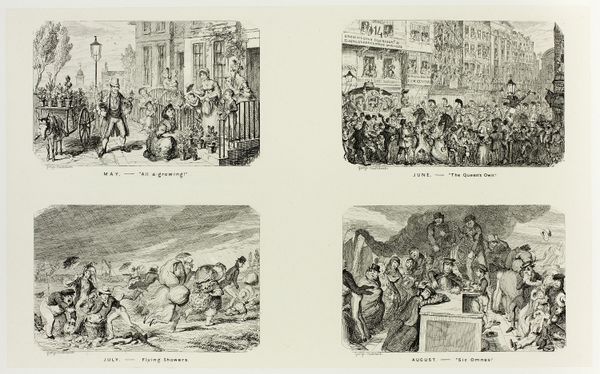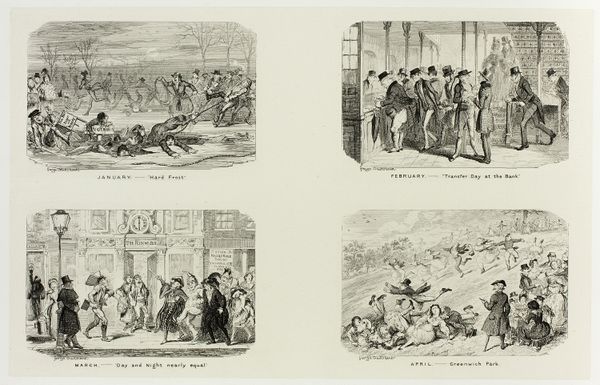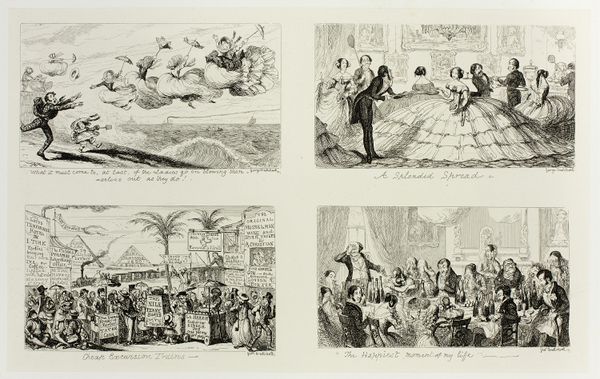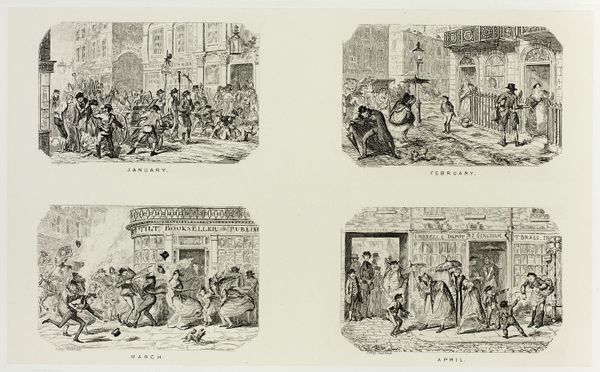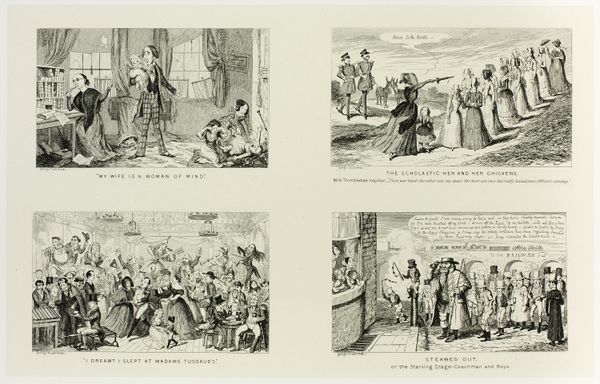
Lady Day - Old & New Style from George Cruikshank's Steel Etchings to The Comic Almanacks: 1835-1853 (top left) c. 1845 - 1880
0:00
0:00
Dimensions: 212 × 332 mm (primary support); 343 × 507 mm (secondary support)
Copyright: Public Domain
Editor: Here we have "Lady Day - Old & New Style," a steel etching by George Cruikshank, dating sometime between 1845 and 1880. The comparison between the "old" and "new" is really striking, with the exaggerated fashions and hairstyles. What’s your take on the cultural commentary happening here? Curator: Well, the image comes from a time when print culture was booming, acting as a key vehicle for social commentary and shaping public opinion. Cruikshank was known for his caricatures, and this work is a clear critique of the shifting societal values reflected in fashion. What do you notice about the way he visually emphasizes the differences? Editor: The sheer size and ornamentation of the new styles seem to be satirized, almost overwhelming the figures themselves! Were these types of images common at the time, and how were they received? Curator: Absolutely. These satirical prints were immensely popular in publications like *The Comic Almanack*, reaching a broad audience and fueling public debates. Think about how these images, displayed publicly, influenced perceptions of class, status, and gender roles. To what extent, do you think, did they reinforce existing biases, or challenge them? Editor: I imagine there was a mix of both! Some would’ve seen the humor and social critique, while others might have felt ridiculed for their fashion choices. It's interesting to think about how this played into constructing social hierarchies. Curator: Precisely! Consider the museum’s role in exhibiting this print today. What responsibility do institutions have when displaying such potentially divisive historical imagery? Editor: I think it’s important to provide context, acknowledging the work's original intent but also addressing its potential impact on contemporary viewers and considering the complex and sometimes uncomfortable aspects of our history. This really made me consider the ongoing role of art in shaping and reflecting our values. Curator: And that is precisely why understanding the history behind such artworks is important, helping us recognize how those debates continue today in the public sphere.
Comments
No comments
Be the first to comment and join the conversation on the ultimate creative platform.
